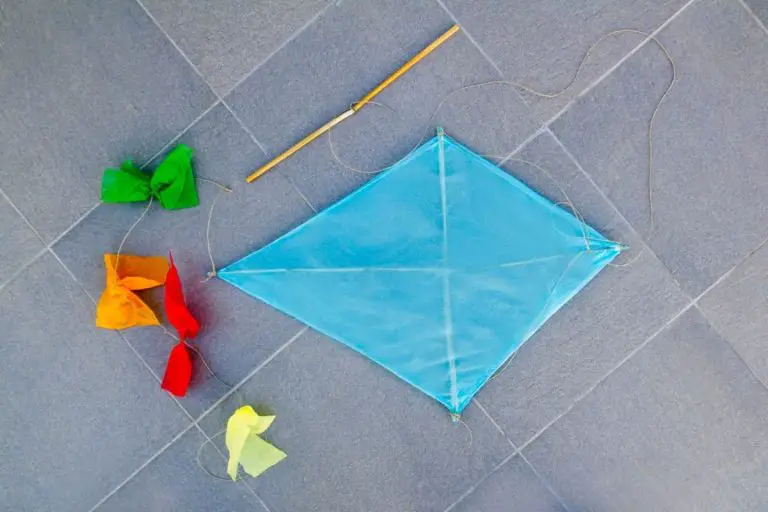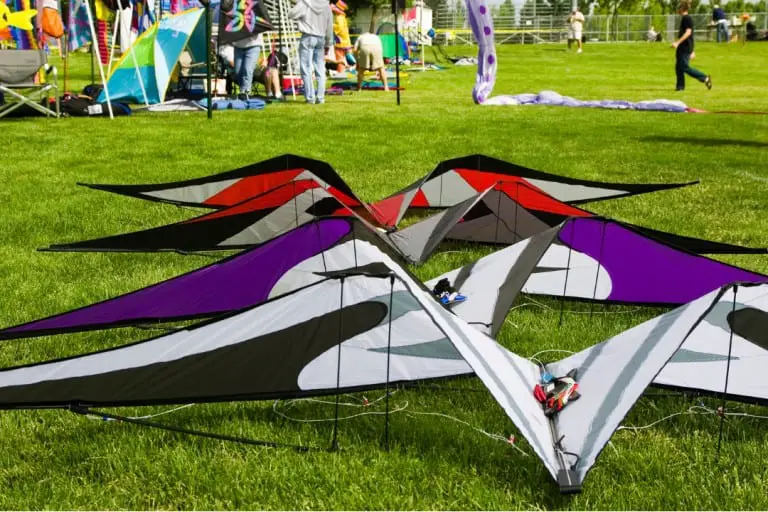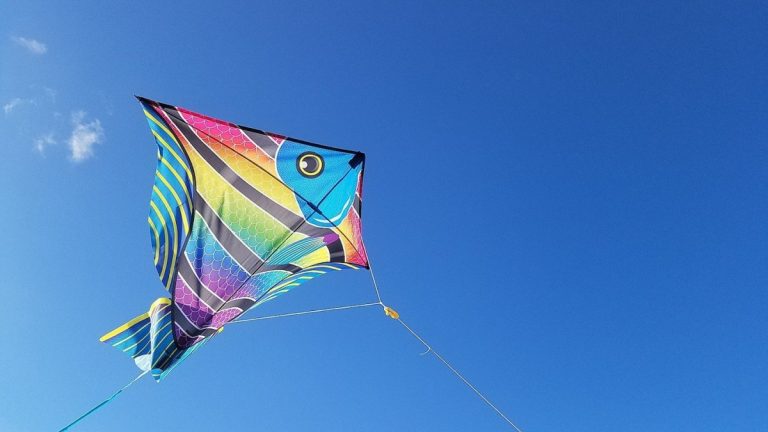Wind And Stunt Kites: What You Need To Know
Kite flying looks so fascinating. But have you ever wondered how that actually works? Exactly how much wind do you need to get a kite to fly? Well, you’re at the right place to get some answers. This article will give you essential details on what you need to know about the wind and stunt kites.
Generally, most stunt kites need light to moderate wind, between 10 to 35 kilometers per hour, to fly correctly. However, a kite’s wind requirement still depends on its material and how much wind it can withstand.
Stunt kite flying has been a fun recreational activity for many generations. Needing only a kite and the wind, kite flying might sound like an easy peasy task, but there is still more to know about it. So if you want to have a good kite flying experience, stick around, and let’s discover more things about the art of stunt kite flying!
The Wind And Stunt Kites: 5 Important Things You Need to Know
1. Medium Winds Work Well For Most Stunt Kites
Most kites will fly in wind speeds ranging from 4 to 15 miles per hour, about 6 to 30 kilometers per hour, or 4 to 16 knots on the Beaufront Wind Scale. If you are not keen on using wind forecasts or wind meters to analyze how much wind is needed to fly a stunt kite, a good indicator that there is enough wind is when leaves rustle or dance and trees sway gently with moderate dust flying around. (source)
2. Smooth Wind Is Better Than Strong Wind
To ensure an excellent kite flying experience, having smooth “regular” wind rather than strong wind is essential. To find smooth wind, you first need to be familiar with the Boundary Layer and the Free Stream.
The Boundary Layer is the area between the ground and the point where interferences no longer influence the wind. However, the thickness of the Boundary Layer varies depending on the altitude, which can also have different effects on your kite. (source)
The region from the end of the Boundary Layer and onwards is what’s called the Free Stream. The Free Stream is ideal where you enjoy a smooth flying experience and take a break from analyzing how much wind is needed to fly a stunt kite. A good tip to finding smooth wind is to fly your kite in a vast and flat area away from nearby obstructions to avoid turbulence. (source)
Strong wind is usually characterized by turbulence resulting in sudden, irregular, and unpredictable wind strength and direction shifts. This type of wind condition is almost impossible to fly a kite. However, you can still attempt to fly your kite in what’s called the wind shadow, which is the turbulent area downwind of an obstacle, but in most cases, your kite will crash soon after. (source)
3. The Wind Window Is Your Best Friend
An essential component of kite flying, especially with stunt kites, the wind window is something all kite flyers or kite enthusiasts must be familiar with. The wind window is characterized as the space where the angle of wind on your kite changes. (source)
When looking ahead, you can imagine the wind window as having the shape of a rainbow. The wind window has a “power zone,” which is the down-low area right in front of you and the “edges” on either side.
The power zone is where your kite gains speed and pulls hard against you but needs fewer hand movements to gain control. The edges are where the kite losses momentum as it slows down, making it more difficult to control. (source)
4. Wind Direction Is Essential
An essential part of preflight checks should be to identify the wind direction before launching. It will assist you in selecting a good anchor position that allows for an effective and safe launching of your kite.
Because many flying sites experience calm wind from one direction and chaotic wind from another, the direction is critical. Essentially, knowing the direction where the wind blows can also help you determine how much wind you need to fly a stunt kite. (source)
Some helpful and simple tips to determine various wind direction signals include:
- Observing the direction in which flags, banners, other kites, streamers, smoke, and dust are blown to
- Feeling the wind on your hands and face
- Facing the wind until the wind’s sound is equally loud in each ear
- Watching the movement of hair or leaves or the direction in which grass or sand blows when dropped
5. Flying In Light Winds and Strong Winds Is Also Possible
Not all kites are created equal. While most kites perform well in medium winds, some were made to withstand light winds, and others were designed to go against strong winds.
To fly in light winds, constantly keep the tension on the stunt kite’s lines while moving around the field.
Using shorter and lighter lines also helps decrease the weight and drag on your kite, giving you better control. On the other hand, longer lines are suitable for slowing down most kites that pull a lot, especially when flying in strong winds. (source)
Now that we’ve tackled some of the essential details on wind information, especially how much wind is needed to fly stunt kites, let’s move on to a quick step-by-step process on how to fly a stunt kite.
How Do You Fly A Stunt Kite?
1. Conduct A Preflight Check
Before launching, make it a priority to scout for the right flying location. A good site for stunt kite flying is a vast, flat area away from nearby obstructions, which can cause wind interfaces such as turbulence.
Check on your kite equipment and make sure that your kite is assembled correctly and in good condition for flying. Also, make it a habit to check the weather forecast, especially the wind speeds for that day before even leaving the house. (source)
2. Evaluate The Wind
Upon arriving at the flying location, check to see if there is enough wind. Most stunt kites only need wind speeds of about 6 to 30 kilometers per hour to fly well. Also, keep in mind that altitude can drastically change the wind speed, with higher altitudes often having higher winds.
If you’re at a high altitude, expect sudden gusts of winds that could potentially snap your stunt kite’s lines. And if you’re somewhere with low altitude, drops in wind speed can quickly crash a kite. (source)
3. Position Yourself At The Right Spot
When preparing for launch, choose a spot with open space and no trees or buildings behind you to avoid turbulence. To check if you’re in an excellent position to launch your stunt kite, let your back face the wind and set your stunt kite down facing the wind, then let it fall backward. If the kite “stands up” after doing so, then you’re ready to launch. (source)
4. Launch Your Stunt Kite
Unroll your kite’s lines and grip the handles securely. After that, pull both lines evenly in front of you until the kite stands up and jerk your hand down to release it while walking a few steps backward. Once the wind catches the sail and the kite rises, position your hands in a relaxed form in front of you. Remember that the kite will most likely go sideways and not straight up, so pull the line opposite to where your kite is rolling towards to correct it. (source)
5. Fly Your Kite And Keep It In The Air
The key to keeping your kite still is to do small and smooth hand movements and avoid jerking the lines or pulling too hard. Once you’ve successfully held it in the air, try steering it and make it follow you where you go.
To control your kite correctly, remember only to pull one side at a time and undo or offset every movement that you do, but only undo your actions after the kite has finished its turn or circle and it is pointing upward. (source)
6. Land Your Kite
Fly your kite low and far to the side until it loses lift and falls softly to land. You can land it nose up and ready to relaunch with a bit of practice. Fly it to the side, then flip the nose up and step forward to land it as it approaches the edge.
Summary Of What We Now Know About Wind And Stunt Kites
By this point, it’s not surprising if you’re experiencing information overload, but do remember that everything we discussed up to this point will help you have fun and exciting flying experiences with your stunt kite.
For many fliers, the wind is a foe, but it can also be your friend. Gathering the correct information about how the wind affects a kite’s flight can be to your advantage because not only can you avoid unfavorable wind conditions. In contrast, with kite flying, you can now overcome them as well.
So the next time you take your kite out flying, make sure that your location doesn’t have any turbulence-causing obstructions and that there is enough wind to take your kite up. And remember, when things don’t go your way despite all the preparations, laugh it off, pick up your kite, and try flying it again.






